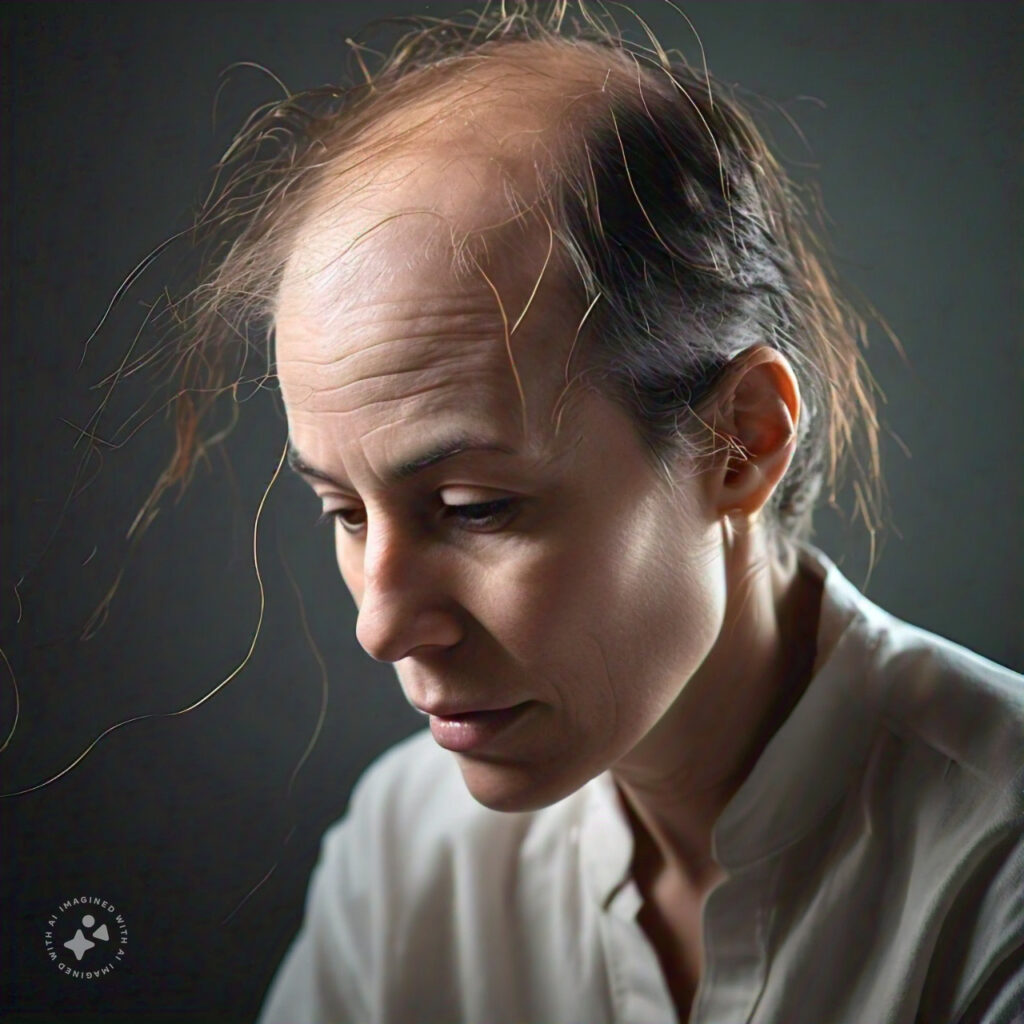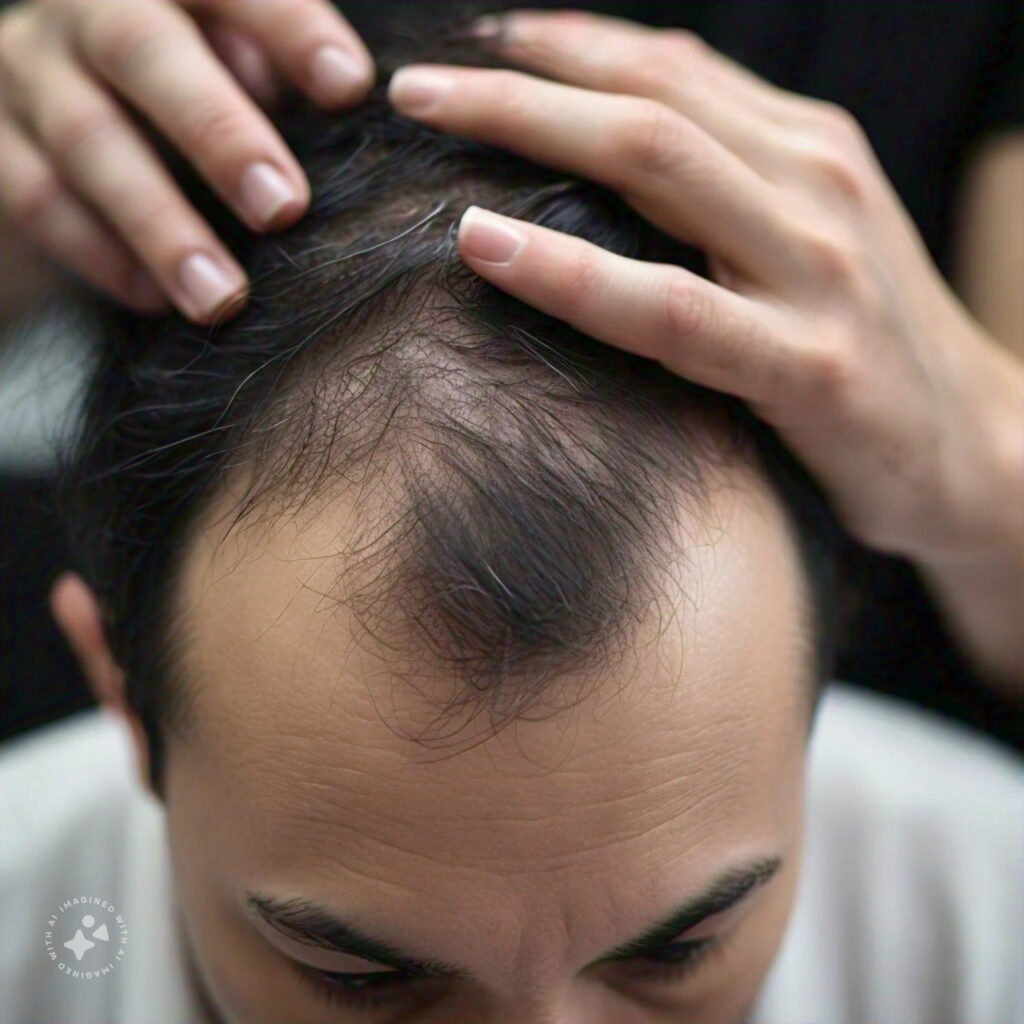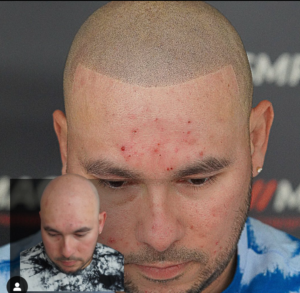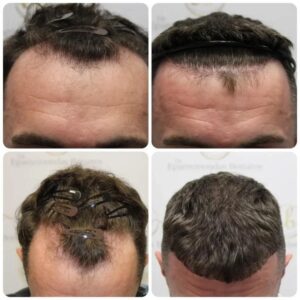Hair loss can be a distressing experience, especially in patches on the scalp. These hair loss patches on the head can affect self-esteem and confidence, making understanding their causes and available treatment options essential. Many people with hair loss patches on the head find it difficult to understand their causes and treatment options.
According to the American Academy of Dermatology, around 80 million men and women in the United States experience hereditary hair loss, which can contribute to patchy hair loss conditions like alopecia areata. This autoimmune disorder affects about 6.8 million people in the U.S. alone, causing the immune system to attack hair follicles, leading to hair loss in small, round patches.

Studies have shown that stress, hormonal changes, and certain medical conditions can also trigger hair loss patches. For instance, telogen effluvium, a common form of hair loss characterized by diffuse thinning of the hair, can be precipitated by significant stress, surgery, or illness.
Treatment options vary depending on the underlying cause. For example, corticosteroid injections are often used to treat alopecia areata, showing improvement in 80% of cases. Minoxidil, an over-the-counter topical treatment, has been shown to slow hair loss and promote regrowth in many users, making it a common choice for those dealing with androgenetic alopecia.
This condition can occur for several reasons, which we will explain. However, if you were thinking about a possible solution to treat bald patches, this article will give you an insight into it. This blog post delves into the reasons behind hair loss patches and explores the best treatment methods.
Table of Contents
Key Takeaway
Hair loss patches on the head can result from various conditions, including alopecia areata, traction alopecia, anagen effluvium, telogen effluvium, and tinea capitis.
Diagnosing the underlying cause is crucial for effective treatment. Options range from non-surgical methods like minoxidil and PRP to surgical treatments such as hair transplants. Home remedies, including specialized shampoos and essential oils, can also support hair health.
With the numerous options available, Scalp Micropigmentation is a game changer. No surgery or transplant is required!
How is Hair Loss Patches on the Head Diagnosed?
Diagnosing hair loss involves a thorough medical history review, physical examination, and sometimes, scalp biopsy or blood tests. Dermatologists may also use a dermatoscope to examine the scalp closely. Determining the cause of hair loss is vital for determining the most effective treatment plan.

Image Credit: Unsplash
What are the Causes of Hair Loss Patches on the Head?
A dermatologist can identify the cause of hair loss patches on the head through tests and diagnosis. But what are the possible causes of this condition? We explain them below:
Alopecia Areata
Alopecia areata is an autoimmune disorder where the immune system attacks hair follicles, leading to sudden, round patches of hair loss. These patches can occur on the scalp or other parts of the body. The exact cause is unknown, but it is believed to involve genetic and environmental factors.
Traction Alopecia
Traction alopecia results from prolonged tension on the hair, often due to tight hairstyles like braids, ponytails, or extensions. This tension damages the hair follicles, causing hair to fall out in patches. Over time, this can lead to permanent hair loss if the hairstyle causing the tension is not changed.
Anagen Effluvium
Anagen effluvium occurs when hair follicles are damaged during the hair cycle’s anagen (growth) phase. It is mostly due to chemotherapy or radiation therapy, which targets rapidly dividing cells, including those in hair follicles. This effect leads to rapid hair loss across the scalp.
Telogen Effluvium
Telogen effluvium is a temporary condition where hair enters the telogen (resting) phase prematurely, causing diffuse hair shedding. Stress, illness, hormonal changes, or nutritional deficiencies can trigger it. While it usually resolves independently, persistent cases may require medical intervention.
Tinea Capitis
Tinea capitis is a fungal scalp infection that leads to scaly patches of hair loss. It is highly contagious and commonly affects children. Symptoms include itching, redness, and sometimes pus-filled sores. Antifungal medications are necessary to treat this condition effectively.
How are Hair Loss Patches on the Head Treated?
Several treatment options are available for bald spots on the head. With technological advancements, these solutions are efficient. We will categorize these treatment options into Surgical treatments, non-surgical methods, and home remedies.
Non-surgical Methods:
Non-surgical treatments for hair loss patches include topical and oral medications as well as innovative therapies:
- Minoxidil: An over-the-counter topical treatment that stimulates hair growth and slows balding.
- Platelet-rich plasma (PRP): PRP involves injecting platelets from your blood into the scalp to promote hair growth.
- Finasteride: An oral medication that reduces hair loss by blocking the hormone responsible for hair follicle shrinkage.
- Scalp Micropigmentation (SMP): A cosmetic procedure that tattoos tiny dots on the scalp to mimic hair follicles and create the appearance of a fuller head of hair. Scalp Micropigmentation is an effective way of improving the look of your thinning hairline without surgery.

Surgical Treatments: Hair Transplants (FUE and FUT)
For more severe cases of hair loss, surgical options like hair transplants can be effective:
- Follicular Unit Extraction (FUE): This technique involves extracting individual hair follicles from a donor area and implanting them into the balding patches.
- Follicular Unit Transplantation (FUT): This involves removing a strip of scalp from the donor area, dissecting it into individual follicular units, and transplanting them to the balding areas. Both methods provide natural-looking results and would require local anesthesia during the process.
Home Remedies: Shampoo and Essential Oils
In addition to medical treatments, home remedies can support hair health and possibly reduce hair loss:
Shampoos with ingredients like ketoconazole, biotin, or caffeine can help strengthen hair and reduce shedding. Essential oils like rosemary, lavender, and peppermint have also been shown to promote hair growth and improve scalp health. They can be massaged into the scalp or added to shampoos.
Frequently Asked Questions and Answers about Hair Loss Patches on The Head
What is the most common cause of hair loss patches on the head?
Alopecia areata is one of the most common causes of sudden hair loss patches.
Can hair loss patches on the head be reversed?
Yes, many cases of hair loss patches can be treated and reversed with the appropriate medical or surgical treatments.
Are home remedies effective for hair loss patches on the head?
Home remedies can support overall scalp health and complement other treatments, but they may not be effective for significant hair loss patches alone.
How long does it take for hair to regrow after treatment?
The time for hair regrowth varies depending on the cause and treatment method. It can take several months to a year for noticeable results.
Is seeing a doctor for hair loss patches on the head necessary?
It is important to consult a healthcare professional to diagnose the cause and recommend appropriate treatment options.
Wrapping Up
Various conditions can cause hair loss patches on the head, each requiring a tailored treatment approach. Effective solutions are available to address hair loss and restore confidence, whether through medical treatments, surgical options, or supportive home remedies.
Consulting with a healthcare professional is crucial to identifying the cause and determining the best treatment plan for your specific situation. Want to book a consultation with Us? Visit Mac SMP to kickstart your hair loss solution journey.
Enjoy This Article? You May Also Like:
- Discover The Best Scalp Micropigmentation In White Plains –Mac SMP
- Scalp Micropigmentation Training: From Beginner To Mastery – The Ultimate Guide To Becoming An SMP Technician
- Hair Today, Here Tomorrow: Navigating Alopecia Treatments In NYC
- Scalp Micropigmentation New York: Say Goodbye To Thinning Hair And Alopecia
- Hair Tattoos In NYC: The Ultimate FAQ For New Yorkers



